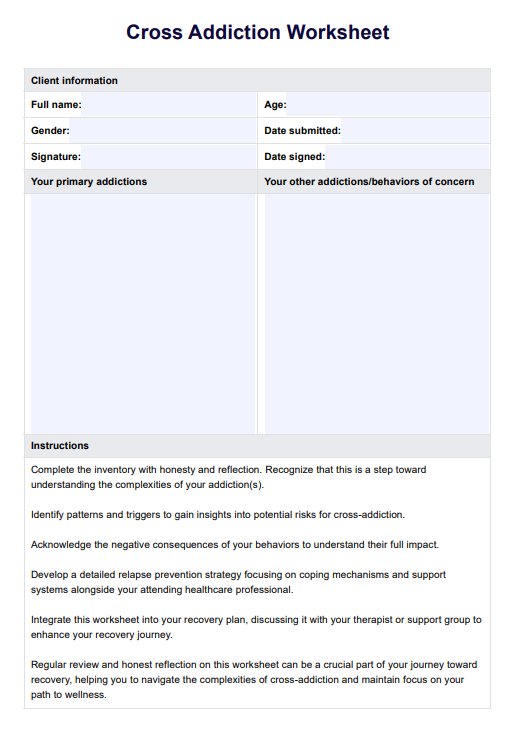Yes, cross addiction can occur with any type of addiction, whether it's related to substance use, behavior, or compulsive habits.

Cross Addiction Worksheet
Use this Cross Addiction Worksheet to help your clients recognize cross addiction so management strategies can be developed later.
Use Template
Cross Addiction Worksheet Template
Commonly asked questions
Individuals with a history of multiple addictions, underlying mental health problems, or a lack of support system may be at an increased risk for cross addiction.
Family members can offer support by encouraging treatment, participating in family therapy sessions, and learning about the nature of addiction and recovery.
EHR and practice management software
Get started for free
*No credit card required
Free
$0/usd
Unlimited clients
Telehealth
1GB of storage
Client portal text
Automated billing and online payments











